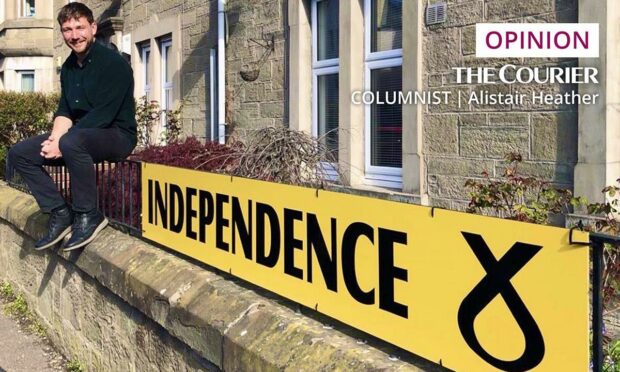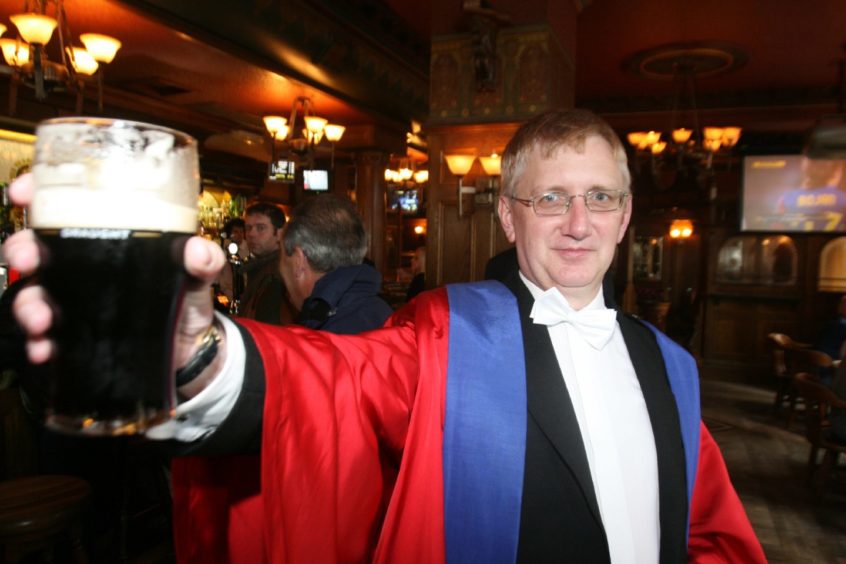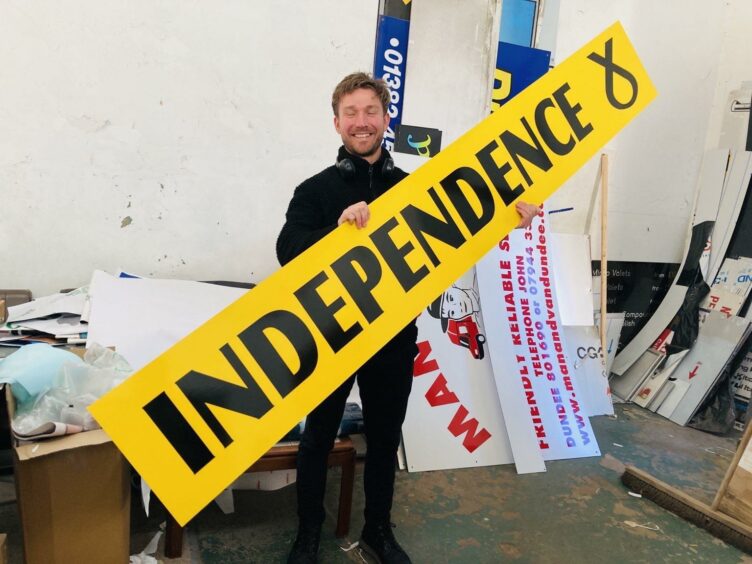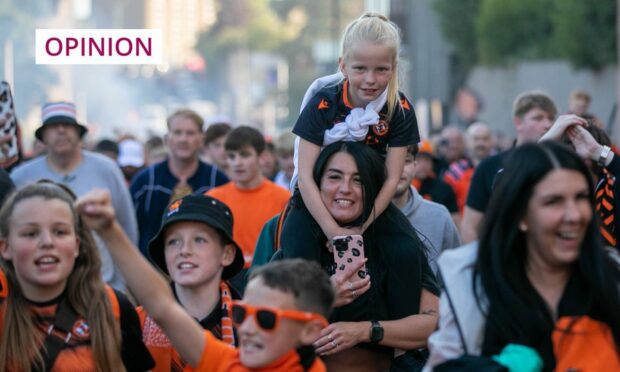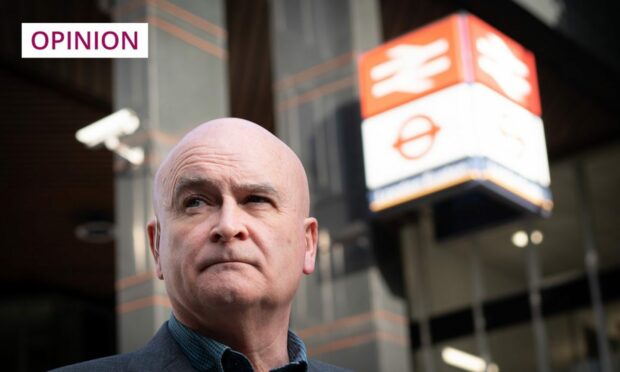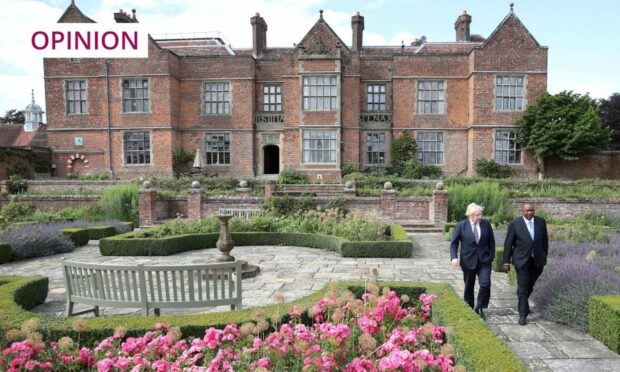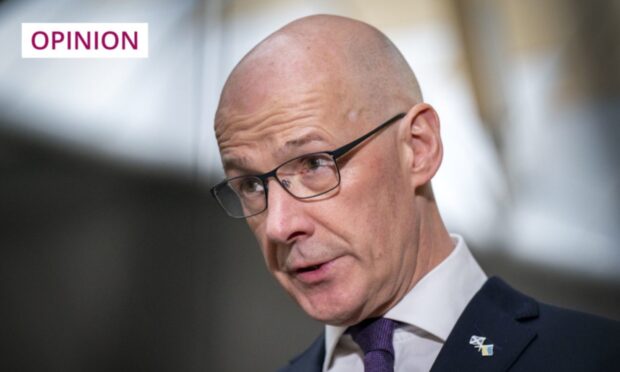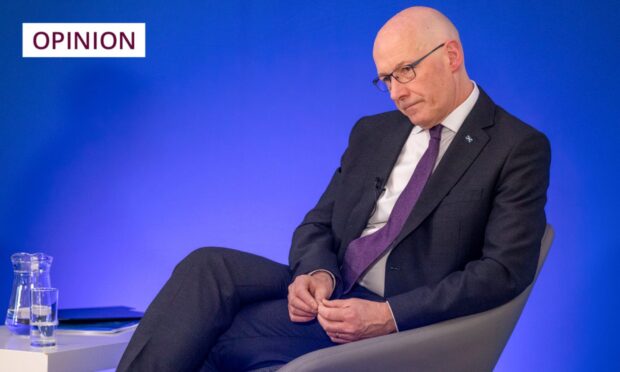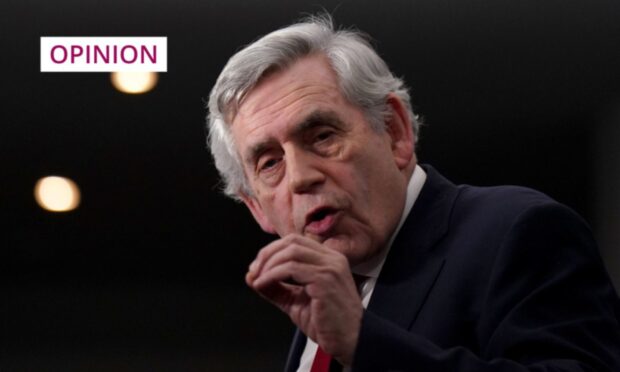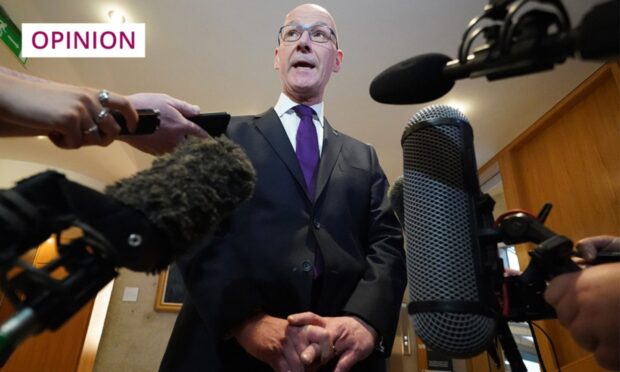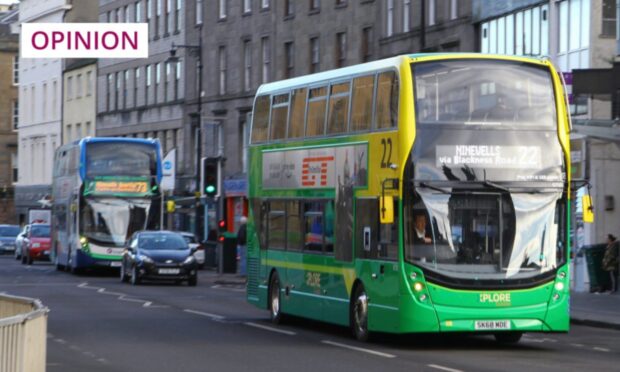I was once birled around briefly at the centre of my own tiny little conspiracy theory.
It was funny, and it led to my being humorously insulted, which is why I’m telling you.
It was also a bit scary.
And it showed how out of control the online information stream currently is – and how much we all need quality journalism.
I bring it up now because it was started by Craig Murray, the independence blogger who was recently jailed for contempt of court.
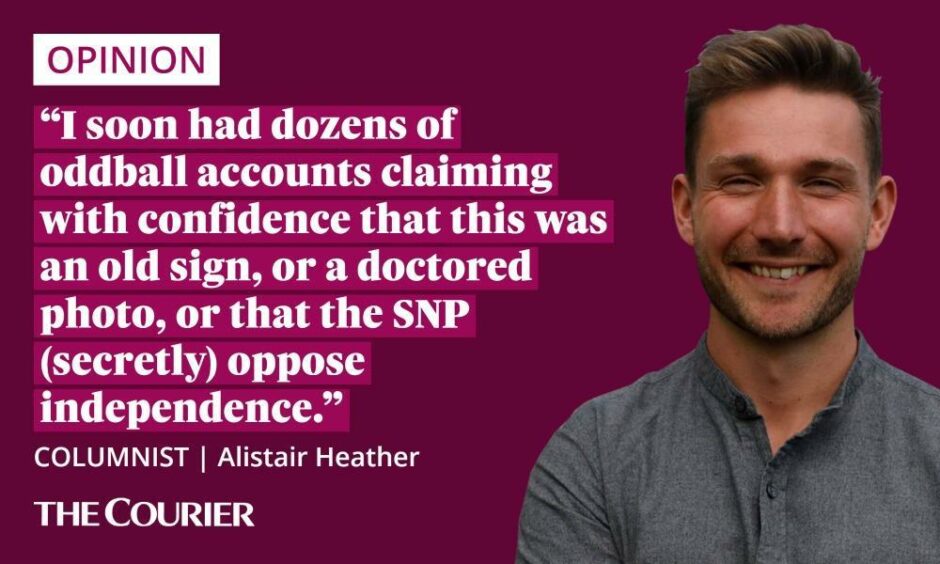
It was around the time of the last Scottish election.
Now I’m very keen on folk in Scotland having the run of our own democracy.
So I vote SNP to ensure we get a crack at a legally binding referendum in the next year or two.
And as I’m a bit of a brash character, I wanted to proclaim this intention loudly fae my front garden.
One Stop Graphics in the old jute mill area by Verdant Works sorted me oot with a banner to fit the wee walltop fence ootside the flat.
But no sooner had I fixed it to my fence and posted a cheery picture than Craig Murray was on it.
Conspiracy theory sleuths I can handle, but who called the fashion police?
The former Dundee Uni rector posted an innuendo to his one hundred THOUSAND followers, suggesting my picture was fake.
Or, rather, he queried whether I had posted an old picture and lied about it, kidding on that it was current.
His initial tweet doesn’t seem like the worst thing in the world.
It certainly casts aspersions, and it clearly views the world through a pro-Alex Salmond lens but Murray does invite me to come along and clear things up.
Behind this Queen Bee, however, came the buzzing of the hive.
I soon had dozens of oddball accounts claiming with confidence that this was an old sign, or a doctored photo, or that the SNP (secretly) oppose independence.
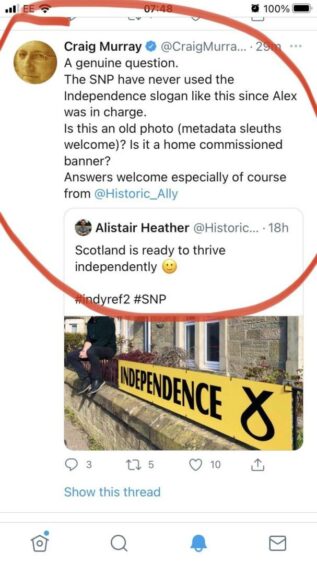
It was a wild ride. And I was killed stone dead by one commentator.
She posted “Having reviewed the picture, It is clearly old. Look at the shoes and clothes, they are from fashions 5 years ago.”
A funny wee story with a serious point
All the while, as these tributes to my style and honesty were pouring in, I was messaging Craig himself, politely and repeatedly asking him to remove the post.
I even had to send him a pic of me collecting the sign that morning.
He prevaricated over deleting it for a while, before he was eventually prevailed upon to remove the initial post.
At which point the toxic assault of weirdo comments also ceased.
It has become a funny story that I like to wheel out, especially when anyone slags my rubbish outfits.
But Since Craig Murray has been jailed for actual shabby reportage and opening up sex assault claimants to abuse, I think it’s worth raising again.
Craig Murray runs a political blog that hangs like a loose little sidecar on the larger vehicle of the independence movement.
He has fully signed up to a conspiracy theory that accuses the SNP and the wider Scottish Government of trying to frame Alex Salmond for sexual assault as a way to discredit him and to derail Scottish independence.
And as mental as that sounds, there are people who believe it.
Easier to spread a conspiracy theory than the facts
I grew up loving a good conspiracy theory myself.
I was a firebrand at high school and it was thrilling, feeling like I alone among my peers knew some secret truth.
So I understand why folk so willingly go along with the likes of Craig Murray.
Matthew Coleman, the Santa Barbara surf school owner who killed his two young children because he thought they had inherited reptilian DNA from his wife, told the FBI he was inspired by British conspiracist David Icke
— David Gilbert (@daithaigilbert) April 5, 2022
Conspiracy is so easy. For some folk, it’s their only path to an audience.
Truth and reliable reporting is incredibly expensive. It’s also difficult.
To report what’s going on in Dundee, Angus, Fife and Perth, DC Thomson has to hire and manage a vast fleet of journalists, on the ground and online.
They run their reports past lawyers and experts.
And they bring in local voices and international authorities to add weight to reports.
The BBC and others do the same.
For reliable news organisations it’s not a matter of leafing through a few online forums, dreaming up some tosh then publishing it to a vast audience.
Truth matters – and we all have a role to play
So I salute you then, dear reader, for realising that news worth reading costs money.
We need as many people to be as informed as possible as we approach council elections and Westminster elections. And, aye, eventually our next instalment in the IndyRef series.
We can all play a role in holding a good standard of debate.
Whether you’re for independence, or for the status quo, or for some advanced devolution proposal, we can accept the hassle, cost and responsibility for making sure we’re informed from good sources.
Our debates can be held, then, in good faith and with the best information we have at the time.
And, perhaps, people can attack me based on my bad ideas, and not on my terrible clothes.
